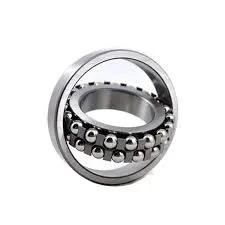
Dec . 12, 2024 09:14 Back to list
what are tapered roller bearings
Understanding Tapered Roller Bearings
Tapered roller bearings are essential components used in a variety of mechanical applications, allowing for the efficient transfer of loads and rotational motion. These bearings are uniquely designed to carry both radial and axial loads, making them a popular choice in industries ranging from automotive to construction and industrial machinery.
Design and Structure
The core design of tapered roller bearings features inner and outer races that are conically shaped, with tapered rolling elements (the rollers) positioned between them. This cone-like geometry enables the bearing to accommodate loads that act at various angles, supporting both radial (perpendicular to the shaft) and axial (along the axis of the shaft) loads. The tapered rollers are usually arranged in such a way that the inner and outer raceways intersect at a common point, which optimizes load distribution and enhances performance.
One of the significant advantages of tapered roller bearings is their ability to handle heavier loads compared to other bearing types, such as ball bearings
. The surface contact between the roller and raceway allows for efficient load transfer, which is crucial in high-load applications.Applications
Tapered roller bearings are extensively utilized in numerous applications. In the automotive industry, for instance, they are commonly found in wheel hubs, transmissions, and differential gears. These bearings play a critical role in ensuring vehicle reliability and performance by allowing smooth rotation while minimizing friction.
what are tapered roller bearings

In industrial machinery, tapered roller bearings are often employed in heavy equipment and gearboxes. Their design helps them withstand the challenges of heavy loads, vibrations, and varying operational conditions, thus extending the service life of the machinery. In addition, many manufacturing processes involve the use of tapered roller bearings in equipment like conveyor systems and pumps, where precise motion and load handling are necessary.
Benefits
Several advantages make tapered roller bearings a favored choice for engineers and designers. Firstly, their design allows for a high load-carrying capacity. This capability is particularly beneficial in applications where heavy loads are common, such as in construction and transport.
Additionally, tapered roller bearings are relatively easy to install and maintain. They are often designed with clearance adjustments, allowing users to customize the fit to minimize wear and extend the bearing's lifespan. This feature is particularly advantageous in applications subject to thermal expansion and varying load conditions.
Moreover, the tapered roller bearing's ability to handle both radial and axial loads without significant performance degradation means they are often used in applications where alternatives may struggle. This versatility can lead to design simplifications and cost savings in the assembly process.
Conclusion
In summary, tapered roller bearings are an integral part of many mechanical systems, providing robust solutions for load-bearing requirements. Their unique design and construction set them apart from other bearing types, allowing for efficient performance under various conditions. As industries continue to evolve, the demand for reliable and high-performance bearings, such as tapered roller bearings, will likely grow, underscoring their importance in modern engineering and manufacturing processes. Understanding their features, benefits, and applications can help engineers make informed choices for mechanical designs, ultimately improving efficiency and reliability in their respective fields.
Latest news
-
Premium Deep Groove Ball Bearings | High Speed & Reliability
NewsAug.29,2025
-
Durable Scaffolding Clamps - Secure & Reliable Tube Connectors
NewsAug.28,2025
-
Common Failures in Thrust Ball Bearings and Solutions
NewsAug.22,2025
-
How Tapered Roller Bearings Can Take Shock Loads
NewsAug.22,2025
-
Angular Bearings in High-Precision Spindles
NewsAug.22,2025
-
The Impact of Misalignment on Cylindrical Roller Bearing Performance
NewsAug.22,2025
